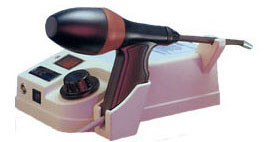Hemorrhoids - What are they?
Hemorrhoids
are enlarged, bulging blood vessels in and about the anus and lower rectum.
Straining, exertion, pregnancy, and other activities can lead to bleeding, pain,
itching and swelling of hemorrhoids. Sometimes hemorrhoids make it
difficult to get clean after a bowel movement and can lead to rashes and
irritation around the anal area. More severe hemorrhoids cause obstruction
and stricture of the anal area making the process of having a bowel movement
even harder and more discomforting. Once hemorrhoids have become enlarged
producing symptoms the patient often will need an intervention to "shrink" or
remove the hemorrhoids before they can obtain relief.
Hemorrhoid treatment options
There are three major methods of treating hemorrhoids in
the office; Infrared coagulation (Laser), Rubber band
ligation, and Sclerotherapy. All methods are essentially
"painless" when performed by an appropriate physician. Office treatments
require no down time, can be performed during a normal office visit, require no
special preparation, no anesthesia, and no medication. These procedures
can be done and you can go right back to work. A surgeon trained in rectal
surgery can determine which treatment method will produce the best
results for your condition.
1. Infrared coagulation
(Laser) -
Using a small probe, a burst of infrared energy is applied to the hemorrhoid's
surface in an area where there is typically no sensation. This
removes a couple millimeters of tissue and requires repeat applications
to produce results. This can be effective for hemorrhoids that
do not prolapse (bulge with bowel movements out of the anal canal).
2.
Rubber band ligation - One of the most permanent in office procedures for the
removal of symptomatic hemorrhoids. A
small band is placed around the base
of the hemorrhoid, above the area where there is sensation. The band
effectively will remove a large portion of the hemorrhoid, essentially leaving
a smaller hemorrhoidal cushion. This typically can begin to produce relief after
the first application. One band is placed per
visit to decrease the chances of having any discomfort and bleeding.
Having multiple bandings performed can be as effective as a full, inpatient
surgery for removal of a patient's hemorrhoids. This treatment when
done right will not produce pain and will produce immediate
results.
3.
Sclerotherapy - An effective treatment for reducing bleeding
internal hemorrhoids. While in the office a small injection is made into
the hemorrhoidal vessels which are above the area of normal
sensation. Over a period of time the hemorrhoid "hardens" and shrinks
due to minor interruption of the blood supply. Can be very effective
for patients on blood thinning medication who bleed with bowel
movements.
4. Hemorrhoidectomy - For the most severe of cases, your surgeon may recommend a hemorrhoidectomy which is a surgery performed in the hospital under general sedation. Typically this has been regarded as a painful surgery, but recently has been improved through the use of a tool called the harmonic scalpel. A harmonic scalpel hemorrhoidectomy uses ultrasound generated energy to gently remove the hemorrhoid, minimizing damage to underlying, sensitive tissue. This both decreases bleeding after the surgery as well as any "collateral" damage through traditional surgery with electrocautery and sutures. For most cases a surgery performed in this manner can be done on an "outpatient" basis without the need for an overnight hospital stay.
Call (614) 921-8686 for a consultation.
